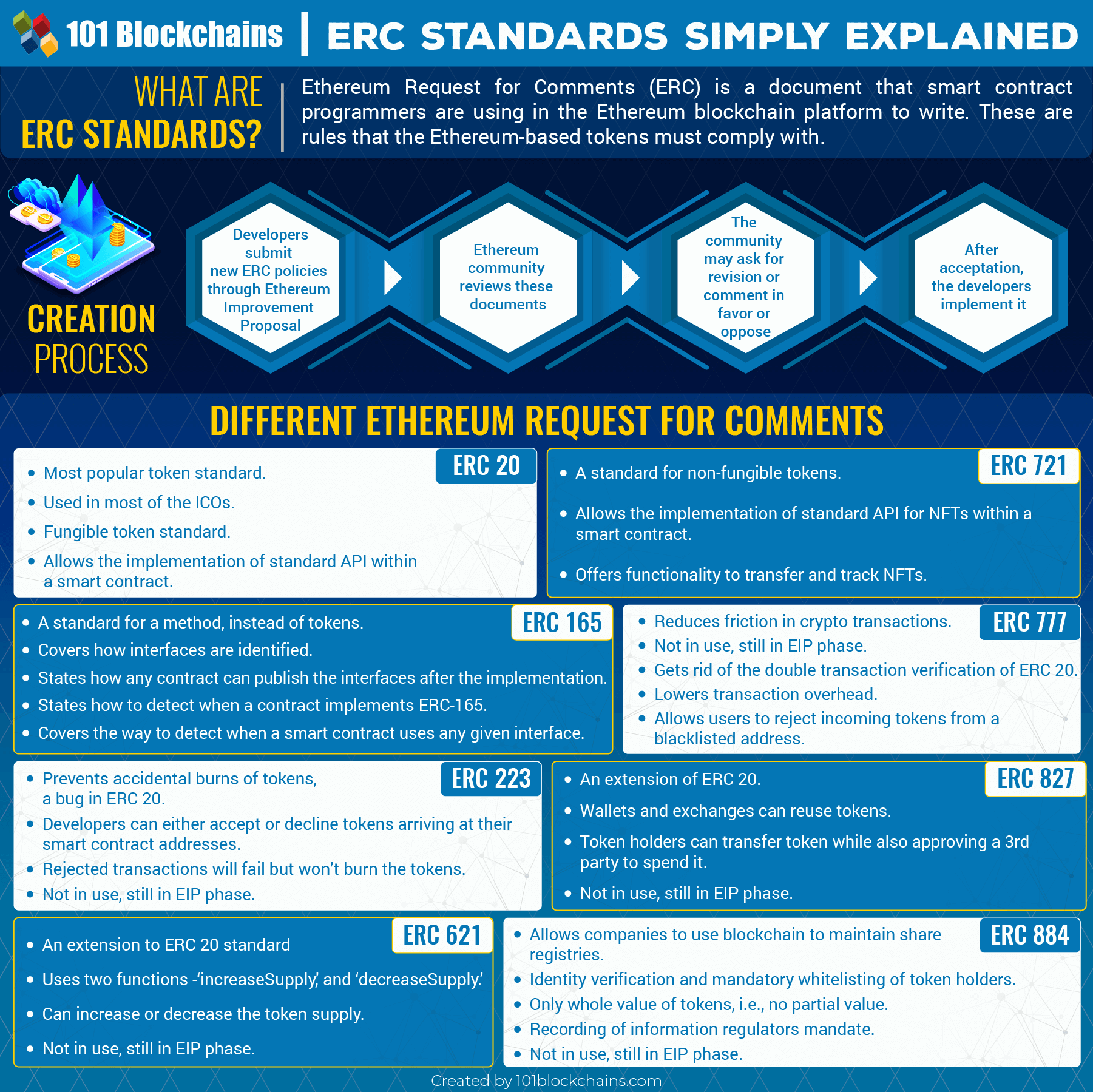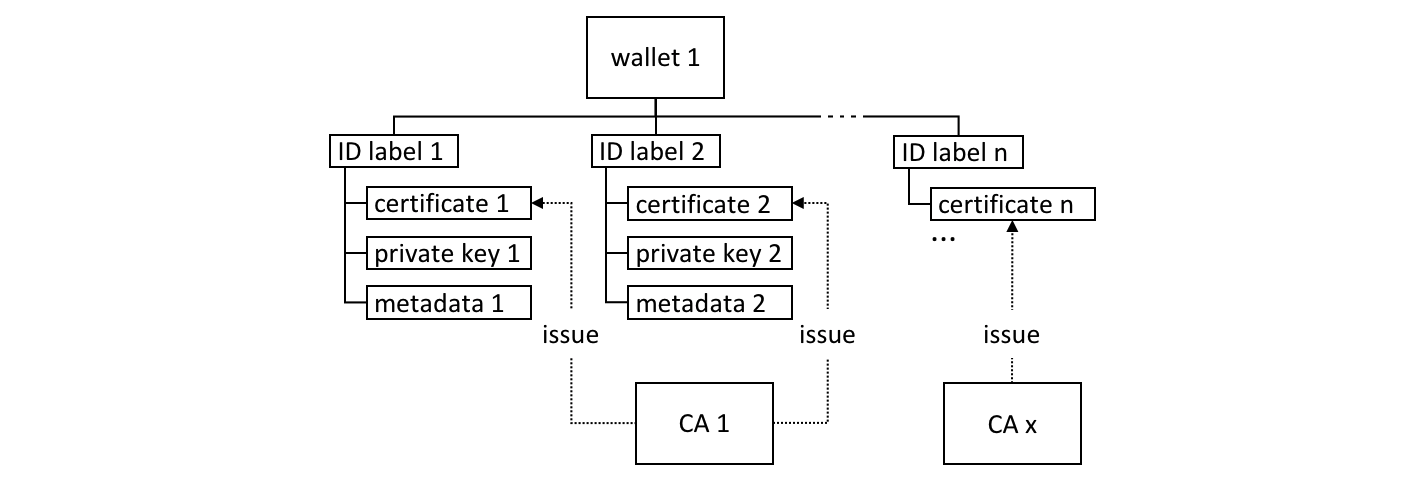m Fabric Tokens
Key Points
- At a point, Fabric will have direct token support
- Fabric can also integrate with tokens on other platforms
References
Key Concepts
Common ERC Token Types - Blockchains 101
Fabric Token Support in Fabric v2.4x
March 2022 - Angelo De Caro, IBM
Tokens-in-Hyperledger-Fabric-Whats-possible-today-and-whats-coming.pdf file for download
Token SDK features
Decentralized Privacy Scenario for Token transactions
Fabric Token Support Stack
Token Requests in Fabric
Token Requests are Blockchain Agnostic
Simple Atomic Token Swap
Fabric Token Sample Apps -
https://github.com/hyperledger/fabric-samples
| Token ERC-20 | Smart contract demonstrating how to create and transfer fungible tokens using an account-based model. | README |
| Token UTXO | Smart contract demonstrating how to create and transfer fungible tokens using a UTXO (unspent transaction output) model. | README |
| Token ERC-1155 | Smart contract demonstrating how to create and transfer multiple tokens (both fungible and non-fungible) using an account based model. | README |
| Token ERC-721 | Smart contract demonstrating how to create and transfer non-fungible tokens using an account-based model. | README |
Kuma Token on Fabric v1.x - simple token model << alternative model to current Fabric token support
https://github.com/Kunstmaan/hyperledger-fabric-kuma-token-example
This a simple example of a token created on the Hyperledger Fabric platform. It exists out of a simple wallet system that can be used to exchange Kuma-tokens and a multisig system that can be used for setting up multisig contracts between users. This example shows how the different tools we created for the Hyperledger Fabric platform can be used:
- Hyperledger Fabric network setup
- Hyperledger Fabric chaincode dev setup
- Hyperledger Fabric Node chaincode utils
- Hyperledger Fabric client utils
This repository exists out of three parts:
- The network configuration, containing all the crypto stuff, channel artifacts and docker compose files.
- The chaincode, containing the chaincode itself written in Node.js.
- The client, which is a simple CLI tool that can be used to interact with the chaincode.
Fabtoken - deprecated for new Fabric Token support framework in 2022
Fabtoken concepts
https://medium.com/coinmonks/the-secret-gem-of-hyperleder-fabric-fabtoken-aa5c37159247
Fabtoken design
Fabtoken interoperability
https://jira.hyperledger.org/browse/FAB-11965
The goal of this epic is to allow a chiancode to allow complex business logic to be attached Fabtoken.
Design Document:
https://docs.google.com/presentation/d/19F1WIm11NX8rdIX6C0pS_lxtOLvFM9ybGGz_rhpSWKo/edit?usp=sharing
https://docs.google.com/presentation/d/19F1WIm11NX8rdIX6C0pS_lxtOLvFM9ybGGz_rhpSWKo/edit?usp=sharing
Building NFTs with Hyperledger Fabric - 2022 - which SDK version?
Part 1
https://www.youtube.com/watch?v=jyEegXLrNr4
Slides - token-workshop-chainyard-p1-Intro to Blockchain and NFT Concepts.pdf link
Slides - token-workshop-chainyard-p1-Intro to Blockchain and NFT Concepts.pdf file
Part 2
https://www.youtube.com/watch?v=PGXOM3KxDyw
token-workshop-chainyard-p2-
https://wiki.hyperledger.org/display/events/Build+Your+Own+NFT+with+Hyperledger+Fabric
Fabric Wallet Services and Solutions
Wallets can be used for different entities in a Fabric solution network
user or owner wallet
organization wallet
enterprise wallet for the entire network
Building wallets in Hyperledger Fabric - memory, file, database
https://hyperledger-fabric.readthedocs.io/en/release-2.2/developapps/wallet.html
There are different types of wallets according to where they store their identities:
The three different types of wallet storage: File system, In-memory and CouchDB.
- File system: This is the most common place to store wallets; file systems are pervasive, easy to understand, and can be network mounted. They are a good default choice for wallets.
- In-memory: A wallet in application storage. Use this type of wallet when your application is running in a constrained environment without access to a file system; typically a web browser. It’s worth remembering that this type of wallet is volatile; identities will be lost after the application ends normally or crashes.
- CouchDB: A wallet stored in CouchDB. This is the rarest form of wallet storage, but for those users who want to use the database back-up and restore mechanisms, CouchDB wallets can provide a useful option to simplify disaster recovery.
Use factory functions provided by the Wallets class to create wallets.
Hardware Security Module
A Hardware Security Module (HSM) is an ultra-secure, tamper-proof device that stores digital identity information, particularly private keys. HSMs can be locally attached to your computer or network accessible. Most HSMs provide the ability to perform on-board encryption with private keys, such that the private keys never leave the HSM.
An HSM can be used with any of the wallet types. In this case the certificate for an identity will be stored in the wallet and the private key will be stored in the HSM.
To enable the use of HSM-managed identities, an IdentityProvider must be configured with the HSM connection information and registered with the wallet. For further details, refer to the Using wallets to manage identities tutorial.
Structure
A single wallet can hold multiple identities, each issued by a particular Certificate Authority. Each identity has a standard structure comprising a descriptive label, an X.509 certificate containing a public key, a private key, and some Fabric-specific metadata. Different wallet types map this structure appropriately to their storage mechanism.
A Fabric wallet can hold multiple identities with certificates issued by a different Certificate Authority. Identities comprise certificate, private key and Fabric metadata.
Indy Wallet & DIDs and how Fabric Token SDK can apply to NFTs
https://www.youtube.com/watch?v=GdsffPM_lLw
Kaleido support for Metamask wallets with Hyperledger Fabric
https://www.kaleido.io/blockchain-platform/metamask
Fabric NFT Tutorial - Chainyard - 2024
LAB - video - Build+Your+Own+NFT+with+Hyperledger+Fabric
https://github.com/hyperledger-labs/nft-auction
Similar in concept than the EBC Web3 trading auction marketplaces with assets, tokens, payments, analytics, a model for AMM using a smart pricer
This lab uses Hyperledger Fabric as the underlying ledger technology to create an auction market. This helps the developer to vizualize how the NFT concept can be extended to private blockchains like Hyperledger Fabric. The application uses Hyperledger Fabric 2.X version in its current form.
Chrome extension for Simple Fabric Wallet ( WIP - not ready for production )
https://medium.com/coinmonks/introducing-the-hyperledger-fabric-chrome-extension-f1fd00f84a2c
the Extension does not yet support a login system that some networks require. Due to this you are currently not able to add credentials.
Despite this, it currently works on most basic networks.
Feel free to check it out/contribute: https://github.com/hyperledger-labs/fabric-chrome-extension
Inspired by Metamask
MetaMask, is it provides a secure way for developers to build a website that can connect to the Ethereum network. It also provides an easy way to send transactions, and cryptocurrencies.
Potential Value Opportunities
Deployment and Operation of Fabric Solutions on Kubernetes using the Fabric Operator
Potential Challenges
Candidate Solutions
Step-by-step guide for Example
sample code block









